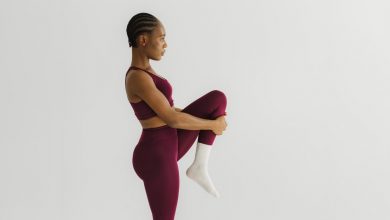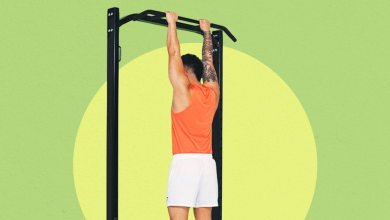The Biggest Exercise Mistake People Make in January

I think that’s a huge reason new exercisers fall into the too much, too soon trap: They see highlight reels and look at them as the norm, the base that they should be hitting if they want to be a lifter, a runner, a yogi, or whatever. It’s not! Those clips are just showing what that person intentionally wants to put out there, which, in many cases for fitfluencers, is their actual, literal job.
You just can’t compare your fitness journey to what a stranger is pumping out on social media—it’s not apples to apples. And if you find yourself feeling bad about your routine (or how your body looks, the gear you use, the PRs you’ve hit, or whatever it may be) based on what you’re seeing, it’s time to unfollow.
Don’t chase soreness.
Whenever you start a fitness program or switch one up, you’ll inevitably feel sore after you exercise. That’s completely normal: There’s simply more microtrauma to your muscles when they’re put through something they’re not used to. (Don’t worry—these tears will mend, which is how you build muscle and get stronger.)
It’s also completely normal to stop feeling a certain level of soreness as your body adjusts to your workout program. This can be a little jarring. You might start to think you’re not doing enough, or feel like you need to ramp things up to bring back that hurts-so-good feeling. But keep in mind: Soreness is not the marker of a successful workout; you absolutely are getting stronger, improving your endurance, and building muscle without it. In fact, if you want to continue making gains for the long haul, keeping your workout intensity in check so your body feels primed and ready to take on your next session (not so sore you can barely lift your arms) is the better way to go about it.
Prioritize rest as much as your workouts.
Along that same note, you really, really need rest days. Contrary to what some fitness apps that praise exercise streaks may lead you to believe, you don’t get a literal gold star for working out daily. In fact, it’s more likely to bring on burnout, injury, decreased performance, and a plummeting sense of enjoyment when gym time rolls around.
So please, take your rest days. Regular exercisers should shoot for two a week, as SELF reported previously, but if you’re just getting started with fitness, I recommend sandwiching in at least one between every workout day. And I mean actual rest. There’s nothing wrong with taking a day completely off from any kind of formal movement. You don’t have to “fill” your time with active recovery options, like brisk walks, easy bike rides, yoga, or stretching. Embrace the time off from your workout and enjoy all the other stuff you’ve got going on instead. Then when it’s time for your next routine, you’ll feel ready and raring to give it what you’ve got.
Remind yourself that exercise is dynamic.
It’s great that you’re starting with fitness, but remember: It’s not going anywhere! Your gym, yoga studio, track, trail, pool, or indoor cycling bike are all still going to be there for you months (and years) down the road, so you don’t need to cram it all in from the get-go.



